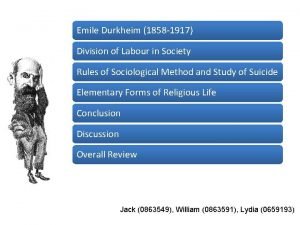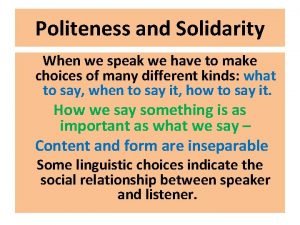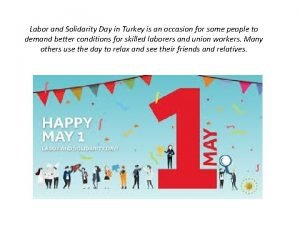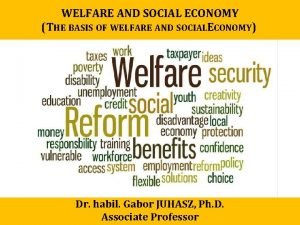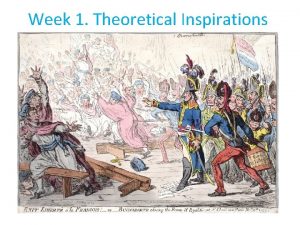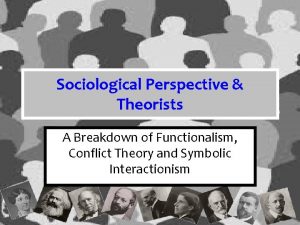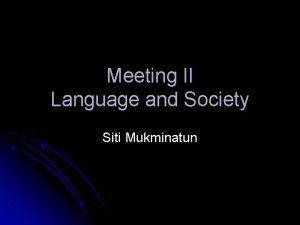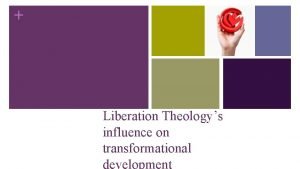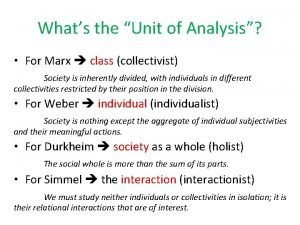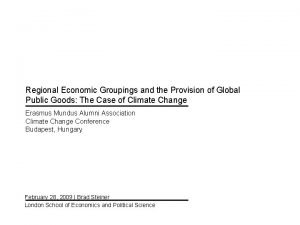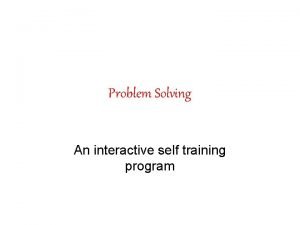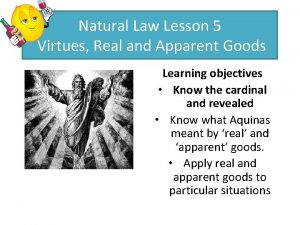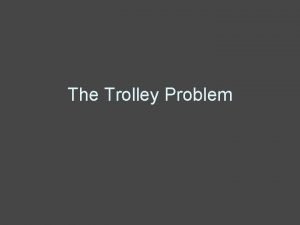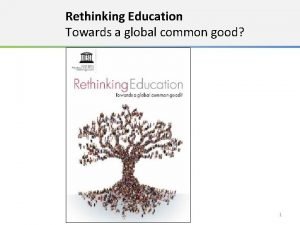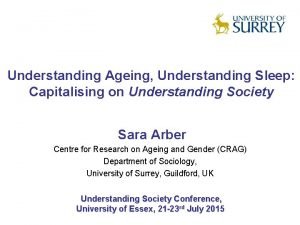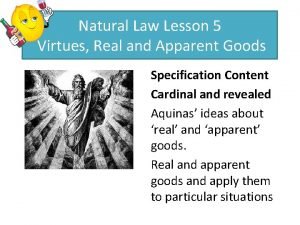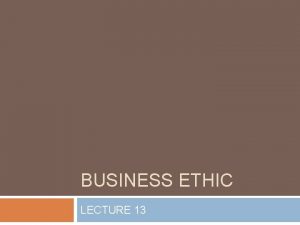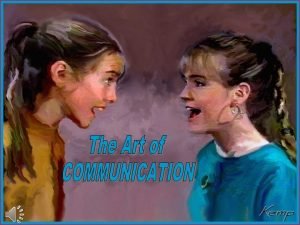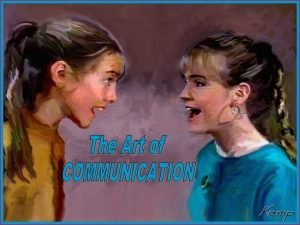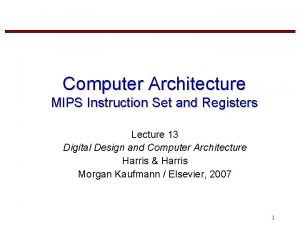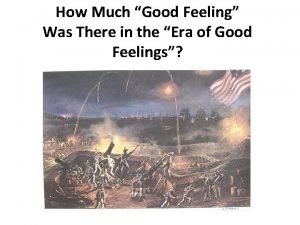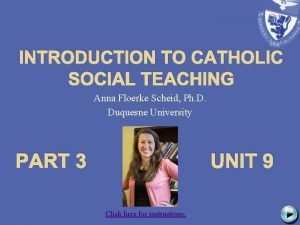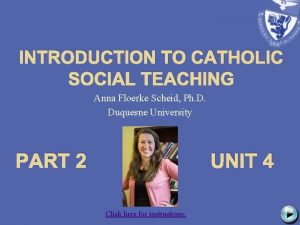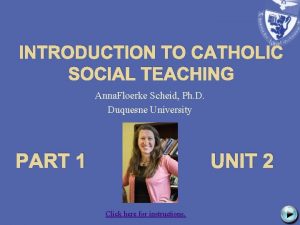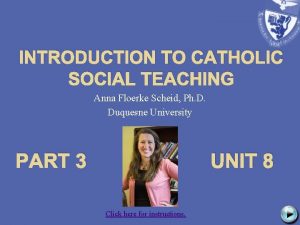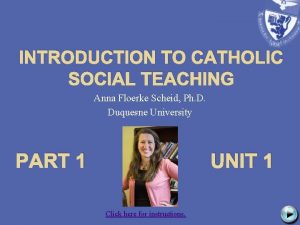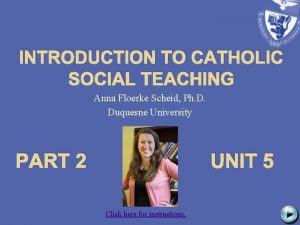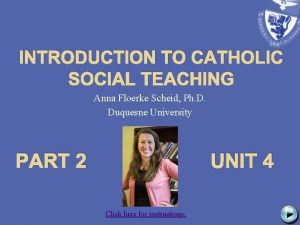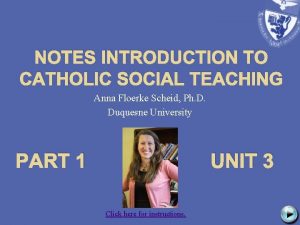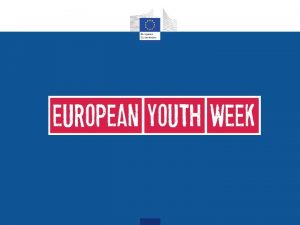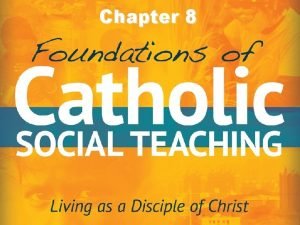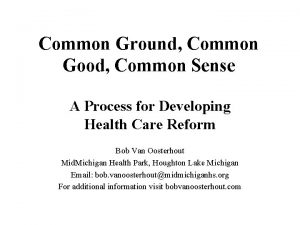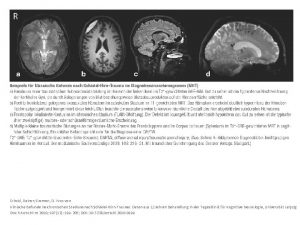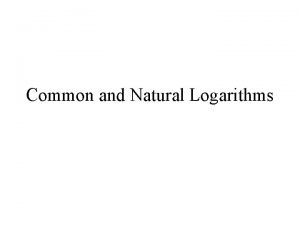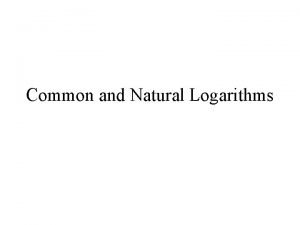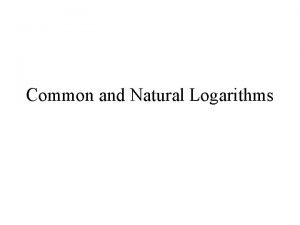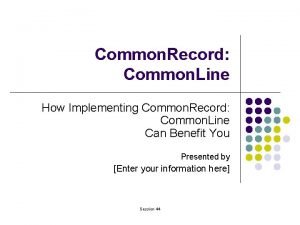SOLIDARITY AND THE COMMON GOOD Anna Floerke Scheid
































































































- Slides: 96

SOLIDARITY AND THE COMMON GOOD Anna Floerke Scheid, Ph. D. Duquesne University PART 2 UNIT 6 Click here for instructions.

Instructions Navigation through the course will occur by clicking on the following action buttons located in the lower right corner of each screen: The HOME button will be placed in the center of each slide and will bring you to the Table of Contents for further navigation. The NEXT and BACK buttons will move you through the course content. The EXIT button will be placed at the end of each Unit and will return you to the course menu.

Instructions � This course is meant to be self-paced, though there will be opportunities to interact with your local and global JPIC groups. � Course content and activities should be completed in the order that they are presented to maximize student success. � The Table of Contents will be your starting point for each Unit

Activity Icons Each type of course activity has a unique icon located in the upper right corner of the screen. In this course you will: Create doc Local discussion Global discussion Reflect Read online Watch video Quiz/test Online journal

PART 2: UNIT 6: SOLIDARITY AND THE COMMON GOOD

UNIT 6 TABLE OF CONTENTS This unit is divided into several components. Start with About This Unit OR click on the link below to navigate to the component where you left off. Revisit as needed. Instructions About This Unit Aims of the Unit What You Will Learn 6. 1 Reading: Solicitudo Rei Socialis 6. 2 Reading: Instrumentum Laboris: The Church in Africa in Service to Reconciliation, Justice, and Peace 6. 3 Notes and Critical Concepts 6. 4 Reflection and Discussion Unit Summary Part II Self-Graded Test

What is this unit about? This unit deals with themes of solidarity and the common good. These are key related themes of Catholic social thought. Solidarity is presented as the remedy for structural sin and part of our commitment to the common good.

Aims of the Unit By the time you are finished with this unit, you should: Have a solid grasp of how the terms “solidarity, ” “common good, ” and “structural sin” are understood in CST Understand how these terms are related to one another Be able to identify sources of structural sin in your own contexts Be able to identify ways that you can enact greater solidarity against the forces of structural sin and toward the common good in your own communities and across the world

What You Will Learn The meaning of the terms “solidarity, ” “the common good, ” and “structural sin” as they are used in CST How solidarity is related to structural sin and to the common good Forms of structural sin as they affect particular parts of the world How structural sins are related to both individuals and communities

6. 1 READING: SOLICITUDO REI SOCIALIS

Reading Click here to complete the reading. Read Solicitudo Rei Socialis 35 -40.

6. 2 READING: INSTRUMENTUM LABORIS: THE CHURCH IN AFRICA IN SERVICE TO RECONCILIATION, JUSTICE, AND PEACE

Reading Click here to complete the reading. Read Instrumentum Laboris: The Church in Africa in Service to Reconciliation, Justice, and Peace, paragraphs 56 -62.

6. 3 NOTES AND CRITICAL CONCEPTS

The Common Good, Solidarity, and Structural Sin The common good and solidarity are principles that, in various ways, have to do with our responsibilities relative to our common life together in society and around the world.

The Common Good The most common CST definition of “the common good” comes from Gaudium et Spes: “The political community exists for that common good in which the community finds its full justification and meaning. . Now, the common good embraces the sum of those conditions of social life by which individuals, families, and groups can achieve their own fulfillment in a relatively thorough and ready way” (74). The Catechism of the Catholic Church delineates “three essential elements” of the common good.

The Common Good 1. Respect for the person, which includes the obligations of societies to respect human rights (par. 1907) 2. Social well-being and development of the community itself A. This involves the governmental “function of authority to arbitrate, in the name of the common good, between various particular interests” (par. 1908). B. The authority “should make accessible to each what is needed to lead a truly human life: food, clothing, health, work, education and culture, suitable information, the right to establish a family, and so on” (par. 1908). 3. Peace, defined as the “stability and security of a just order” (par. 1909)

Solidarity While the idea of solidarity appears throughout much of CST, Pope John Paul II (JPII) made major contributions to the concept of solidarity, especially in Solicitudo Rei Socialis (SRS). SRS emphasizes solidarity as a social virtue (i. e. , not just a virtue inculcated by individuals but by whole societies). We are in solidarity with others not just as individuals but as whole communities. Consider, for example, how nations commit to helping one another through aid packages or how citizens of one nation might donate funds to Catholic Relief Services after a severe natural disaster in another nation.

Solidarity How is solidarity a social virtue? JPII argues that in this era of globalization, we are aware that we are becoming increasingly interdependent economically, politically, and even culturally. Since global interdependence involves all aspects of human endeavor (economical, political, and cultural), it can be viewed as a moral category, or a reality requiring a moral response. Once we have a moral category requiring a moral response, we can speak of the virtues needed to respond to that category. Solidarity is the moral virtue with which to respond to the moral category of global interdependence.

Solidarity In general, solidarity means recognizing other persons as persons and not as instruments or means to another person’s ends. In other words, solidarity is related to the recognition of the fundamental human dignity of others.

Solidarity For JPII, solidarity is the remedy for structural sin (also sometimes called institutional sin or social sin): “[Solidarity] is a firm and persevering determination to commit oneself to the common good; that is to say to the good of all and of each individual, because we are all really responsible for all. This determination is based on the solid conviction that what is hindering full development is that desire for profit and that thirst for power already mentioned. These attitudes and ‘structures of sin’ are only conquered—presupposing the help of divine grace —by a diametrically opposed attitude: a commitment to the good of one's neighbor with the readiness, in the gospel sense, to ‘lose oneself’ for the sake of the other instead of exploiting him, and to ‘serve him’ instead of oppressing him for one's own advantage (cf. Mt 10: 40 -42; 20: 25; Mk 10: 42 -45; Lk 22: 25 -27)” (38).

Solidarity To reiterate, for JPII, solidarity is the remedy for structural sin (also sometimes called institutional sin or social sin): “The ‘evil mechanisms’ and ‘structures of sin’ of which we have spoken can be overcome only through the exercise of the human and Christian solidarity to which the Church calls us and which she tirelessly promotes” (40).

So What is Structural Sin? Structural sins are sins/evil which all or large groups within society are responsible for perpetuating together and can only be overcome through the efforts of all or large groups within society working together. JPII argues that structural sins are “linked to concrete acts of individuals who introduce these structures, consolidate them and make them difficult to remove. And thus they grow stronger, spread, and become the source of other sins, and so influence people’s behavior” (36). Examples of structural sin include slavery, sexism, racism, widespread poverty/underdevelopment, mass hunger/starvation, and ecological degradation.

So What is Structural Sin? Structural sin gets a foothold through a cyclical process whereby individuals introduce sinful behaviors into systems. The sins become entrenched in structures, social institutions, and products of culture. These sinful structures then influence individuals and shape behavior. For example, consider sweatshop labor. Individuals seek to make a high profit margin within the system of global capitalism. Goods then become cheaper in industrialized nations like the U. S. The cheaper goods entice U. S. citizens to buy those products over goods that may have been more ethically produced but are also more expensive. So the behavior of the individual buyer is connected to the sin inherent in the entire system of sweatshop production.

So What is Structural Sin? Structures/institutions can also encourage virtue or positive actions. Social security taxation might be one kind of example. The tax structure of certain governments requires individuals to pay into a common fund that will, ideally, protect and provide for their well-being as they age. If I live in a nation that draws social security taxes directly from my paycheck, I am helping to provide for vulnerable people in my community through my work. Presumably, I myself will also benefit from this system at some point.

So What is Structural Sin? Note that in both the positive and the negative examples, individual actions occur in part because of an individual’s participation in the structure. The structure provides a “path of least resistance” on which to walk, and that path promotes the behaviors that the structure favors for good or for ill. It is not so much that we as individuals have made perfectly free choices. We are constrained, formed, and shaped to make “easy” choices (whether virtuous or sinful) by the structures that surround us. While it is true that we can choose to act differently, it is usually not without considerable awareness and possibly serious cost to ourselves.

So What is Structural Sin? Note that different communities and cultures may experience different forms of structural sin. Consider, for example, the structural sins discussed in the reading from the African Synod for Unit 6. Finally, JPII argues that structural sins are opposed to peace. In this way, solidarity as the remedy for structural sin is also the pathway to peace (39).

6. 4 REFLECTION AND DISCUSSION

Journal Take the survey “How Many Slaves Work for You? ” In your course journal, reflect on what it means to find out "how many slaves work for you. " Are you surprised by the survey or by its outcome? What do you find enlightening, frustrating, etc. , about this exercise? Does this exercise shed new light on themes of Catholic social thought you have already learned about? Are there practical or conceptual tools in Catholic social thought that can enable us to work toward justice in the global economy? Post your responses to the Discussion Board. Read and respond to others’ reflections.

Unit Summary In Unit 6, you were introduced to the CST themes of the common good and solidarity. You learned what these concepts are and how they are related to the concept of structural sin. You saw how structural sin, solidarity, and the common good are built by individuals who shape communities, and by communities who shape individuals in a constant cycle of either social virtue or social vice. You read about how these themes have been violated in global contexts but also reflected on how they might be better realized.

PART II SELF-GRADED TEST

Part II Self-Graded Test Directions: Complete the test on the following slides. Grade yourself honestly and review as needed. To select your answer, click on best possible choice. If your answer is correct, you will see a If your answer is incorrect, you will see a and you should return to the question to try again. Use the to move to the next question or to navigate to the previous after choosing an incorrect answer. The home button will remain on each slide so that you can review material if needed. **Start 20 Question Self-graded test

Multiple Choice Questions

Q 1: The doctrine of imago Dei expresses the Christian belief that: A. All of creation is the body of God. B. All human beings are created in the image of God, are loved and valued by God, and are called to live in relationship with God. C. Jesus Christ has triumphed over sin through his death and resurrection. D. God calls all creation good and gives human beings the responsibility of caring for creation.

OOPS! The answer you chose is incorrect. Click the button in the corner to try again.

CORRECT!! Let’s go to the next question!

Q 2: The dignity of the human person: A. Involves the fundamental worth of all people and calls us to refrain from acts like torture, unjust discrimination, or gross over-consumption that mar human life. B. Can be lost by those who habitually commit violations of human dignity. C. Is contingent upon their having been baptized into the Christian faith. D. Is more perfectly manifest in men than in women.

OOPS! The answer you chose is incorrect. Click the button in the corner to try again.

CORRECT!! Let’s go to the next question!

Q 3: Gaudium et Spes: A. Was written by a committee of persons that included bishops, theologians, and lay people. B. Represents a break from the Church’s prior stance of defensiveness against the modern world and culture of its time. C. Affirms the role of conscience in contributing to human dignity. D. All of the above.

OOPS! The answer you chose is incorrect. Click the button in the corner to try again.

CORRECT!! Let’s go to the next question!

Q 4: The preferential option for the poor and vulnerable states that: A. All decisions, whether made by individuals or societies, should be made in light of how they affect the poor and vulnerable, and that no decision should be made that harms the poor and vulnerable. B. Some decisions which harm the poor may be morally justified if they result in a greater good for a large segment of society. C. The poor should stop being lazy and get a quality education and good-paying job. D. None of the above.

OOPS! The answer you chose is incorrect. Click the button in the corner to try again.

CORRECT!! Let’s go to the next question!

Q 5: In affirming the preferential option for the poor, the U. S. Bishops argue that: A. Personal economic decisions are not really moral decisions because they have little impact on the poor. B. Jesus rejected the rich as evil-doers. C. Christian faith cannot be separated from our day-to-day activities in the market. Our faith, including our concern for the poor and vulnerable, should inform our economic choices. D. Giving from one’s surplus goods as a form of charity is a sufficient response to his/her moral obligations to the poor.

OOPS! The answer you chose is incorrect. Click the button in the corner to try again.

CORRECT!! Let’s go to the next question!

Q 6: Which of the following is an example of structural sin? A. Lying B. Slavery C. Adultery D. Envy

OOPS! The answer you chose is incorrect. Click the button in the corner to try again.

CORRECT!! Let’s go to the next question!

Q 7: The concept of the common good in Catholic Social Teaching includes: A. Respect for human beings. B. The well-being of the community itself. C. Peace and security. D. All of the above.

OOPS! The answer you chose is incorrect. Click the button in the corner to try again.

CORRECT!! Let’s go to the next question!

Q 8: Pope John Paul II calls solidarity: A. A result of random acts of kindness. B. A necessary evil in a world filled with structural sin. C. The remedy for structural sin. If we can build networks of relationships across social boundaries, we can dismantle harmful social structures. D. A vague feeling of compassion for those less fortunate than us.

The answer you chose is incorrect. Click the button in the corner to try again.

CORRECT!! Let’s go to the next question!

Q 9: Structural sins are: A. Fairly easy to dismantle and replace with virtuous institutions. B. Wrongdoing within the Church. C. A form of sinning out of weakness. D. Sins that arise as individuals consolidate their sinful behavior into institutions, which then influence and shape individuals.

OOPS! The answer you chose is incorrect. Click the button in the corner to try again.

CORRECT!! Let’s go to the next question!

Q 10: In the Instrumentum Laboris for the Second African Synod, the African Bishops: A. Reaffirm traditional gender roles across the continent. B. Recognize political, economic, and cultural injustices that demand correction for vulnerable populations including the poor, farmers, women, refugees, and migrants. C. Call the notion of political, economic, and cultural injustices in Africa a negative stereotype that must be rejected. D. Affirm the role of the International Criminal Court in prosecuting corruption and human rights abuses.

OOPS! The answer you chose is incorrect. Click the button in the corner to try again.

CORRECT!! Let’s go to the next question!

TRUE/FALSE QUESTIONS

Q 11: In contrast to most previous documents of CST, Gaudium et Spes uses both natural law and theological arguments to address social concerns. TRUE FALSE

OOPS! The answer you chose is incorrect. Click the button in the corner to try again.

CORRECT!! Let’s go to the next question!

Q 12: There are many different ways that theologians and philosophers understand the idea that human beings are created in the image of God. One of these is that human beings’ physical bodies resemble God’s physical body. TRUE FALSE

OOPS! The answer you chose is incorrect. Click the button in the corner to try again.

CORRECT!! Let’s go to the next question!

Q 13: According to CST, there is nothing a person can do or undergo that eradicates their dignity or worth as a human being. TRUE FALSE

OOPS! The answer you chose is incorrect. Click the button in the corner to try again.

CORRECT!! Let’s go to the next question!

Q 14: Some examples of the promotion of human dignity include: ensuring access to clean water and adequate food; gender and racial equality; and nonviolent protest against injustice. TRUE FALSE

OOPS! The answer you chose is incorrect. Click the button in the corner to try again.

CORRECT!! Let’s go to the next question!

Q 15: The purpose of the preferential option for the poor and vulnerable is to empower the most vulnerable members of our communities to participate fully in society and to contribute to and benefit from the common good. TRUE FALSE

OOPS! The answer you chose is incorrect. Click the button in the corner to try again.

CORRECT!! Let’s go to the next question!

Q 16: In the Gospel of Matthew, the story of the separation of the sheep and the goats suggests that individual people are judged by God based on whether they have cared for the poor and vulnerable. TRUE FALSE

OOPS! The answer you chose is incorrect. Click the button in the corner to try again.

CORRECT!! Let’s go to the next question!

Q 17: The U. S. is such a wealthy nation that poverty is not considered to be a serious social problem by U. S. Church leaders. TRUE FALSE

OOPS! The answer you chose is incorrect. Click the button in the corner to try again.

CORRECT!! Let’s go to the next question!

Q 18: While the social teachings of the Church are very critical of communism and socialism, they are largely positive and uncritical when it comes to global market capitalism. TRUE FALSE

OOPS! The answer you chose is incorrect. Click the button in the corner to try again.

CORRECT!! Let’s go to the next question!

Q 19: As a social virtue, solidarity responds to the reality of global interdependence, often called globalization. TRUE FALSE

OOPS! The answer you chose is incorrect. Click the button in the corner to try again.

CORRECT!! Let’s go to the next question!

Q 20: Solidarity means recognizing that other people are ends in themselves and never only means to an end. TRUE FALSE

OOPS! The answer you chose is incorrect. Click the button in the corner to try again.

CORRECT!! Go to the next slide!

Congratulations! You have completed the test for Part 2 Unit 6.

YOU HAVE COMPLETED UNIT 6 Please return to the Table of Contents using the HOME button to review any material or EXIT to the course menu.
 Common good
Common good Organic solidarity
Organic solidarity Www.googleimage
Www.googleimage Solidarity strategy in pragmatics
Solidarity strategy in pragmatics Labor and solidarity day ne demek
Labor and solidarity day ne demek Zoroastrianism beliefs
Zoroastrianism beliefs Good morning
Good morning Good afternoon animado
Good afternoon animado You are good you are good when there's nothing good in me
You are good you are good when there's nothing good in me Cómo se dice buenas tardes
Cómo se dice buenas tardes Welfare economics examples
Welfare economics examples Mechanical solidarity definition sociology
Mechanical solidarity definition sociology Organic solidarity
Organic solidarity Criticisms of conflict theory
Criticisms of conflict theory Structural functionalist
Structural functionalist Language
Language Definiton justice
Definiton justice Solidarity meaning
Solidarity meaning Mechanical solidarity
Mechanical solidarity Economic groupings
Economic groupings Solidarity meaning
Solidarity meaning Solidarity tax credit eligibility
Solidarity tax credit eligibility Gcf 54 and 27
Gcf 54 and 27 Common anode and common cathode
Common anode and common cathode Prime factors of 72
Prime factors of 72 What are the factors for 54
What are the factors for 54 Find the lcm of 16 24 36 and 54
Find the lcm of 16 24 36 and 54 Highest common factors and lowest common multiples
Highest common factors and lowest common multiples Hình ảnh bộ gõ cơ thể búng tay
Hình ảnh bộ gõ cơ thể búng tay Frameset trong html5
Frameset trong html5 Bổ thể
Bổ thể Tỉ lệ cơ thể trẻ em
Tỉ lệ cơ thể trẻ em Voi kéo gỗ như thế nào
Voi kéo gỗ như thế nào Chụp phim tư thế worms-breton
Chụp phim tư thế worms-breton Alleluia hat len nguoi oi
Alleluia hat len nguoi oi Môn thể thao bắt đầu bằng từ đua
Môn thể thao bắt đầu bằng từ đua Thế nào là hệ số cao nhất
Thế nào là hệ số cao nhất Các châu lục và đại dương trên thế giới
Các châu lục và đại dương trên thế giới Công của trọng lực
Công của trọng lực Trời xanh đây là của chúng ta thể thơ
Trời xanh đây là của chúng ta thể thơ Mật thư tọa độ 5x5
Mật thư tọa độ 5x5 Phép trừ bù
Phép trừ bù độ dài liên kết
độ dài liên kết Các châu lục và đại dương trên thế giới
Các châu lục và đại dương trên thế giới Thơ thất ngôn tứ tuyệt đường luật
Thơ thất ngôn tứ tuyệt đường luật Quá trình desamine hóa có thể tạo ra
Quá trình desamine hóa có thể tạo ra Một số thể thơ truyền thống
Một số thể thơ truyền thống Cái miệng xinh xinh thế chỉ nói điều hay thôi
Cái miệng xinh xinh thế chỉ nói điều hay thôi Vẽ hình chiếu vuông góc của vật thể sau
Vẽ hình chiếu vuông góc của vật thể sau Biện pháp chống mỏi cơ
Biện pháp chống mỏi cơ đặc điểm cơ thể của người tối cổ
đặc điểm cơ thể của người tối cổ Ví dụ về giọng cùng tên
Ví dụ về giọng cùng tên Vẽ hình chiếu đứng bằng cạnh của vật thể
Vẽ hình chiếu đứng bằng cạnh của vật thể Vẽ hình chiếu vuông góc của vật thể sau
Vẽ hình chiếu vuông góc của vật thể sau Thẻ vin
Thẻ vin đại từ thay thế
đại từ thay thế điện thế nghỉ
điện thế nghỉ Tư thế ngồi viết
Tư thế ngồi viết Diễn thế sinh thái là
Diễn thế sinh thái là Dạng đột biến một nhiễm là
Dạng đột biến một nhiễm là Các số nguyên tố
Các số nguyên tố Tư thế ngồi viết
Tư thế ngồi viết Lời thề hippocrates
Lời thề hippocrates Thiếu nhi thế giới liên hoan
Thiếu nhi thế giới liên hoan ưu thế lai là gì
ưu thế lai là gì Hổ đẻ mỗi lứa mấy con
Hổ đẻ mỗi lứa mấy con Sự nuôi và dạy con của hổ
Sự nuôi và dạy con của hổ Hệ hô hấp
Hệ hô hấp Từ ngữ thể hiện lòng nhân hậu
Từ ngữ thể hiện lòng nhân hậu Thế nào là mạng điện lắp đặt kiểu nổi
Thế nào là mạng điện lắp đặt kiểu nổi You are good and your love endures forever
You are good and your love endures forever Law is order and good law is good order
Law is order and good law is good order Example of apparent good
Example of apparent good Common good approach
Common good approach Rethinking education: towards a global common good?
Rethinking education: towards a global common good? Good morning gentlemen. of you is first in line
Good morning gentlemen. of you is first in line Excellent very good good fair poor scale
Excellent very good good fair poor scale Example of real and apparent good
Example of real and apparent good Teacher good morning class
Teacher good morning class Gap
Gap Information is neutral & amoral
Information is neutral & amoral Merit good vs public good
Merit good vs public good Looking good feeling good
Looking good feeling good He who finds a wife
He who finds a wife Good morning teacher
Good morning teacher Good morning everyone or good morning everybody
Good morning everyone or good morning everybody To have a good friend you need to be a good friend
To have a good friend you need to be a good friend I am glad to be with you
I am glad to be with you Communication occurs when two
Communication occurs when two Good communication occurs when
Good communication occurs when Mips instruction set architecture
Mips instruction set architecture Look good feel good quote
Look good feel good quote Good charlotte the young and the hopeless
Good charlotte the young and the hopeless War good good feeling
War good good feeling Good morning good lookin
Good morning good lookin Responses hello
Responses hello Good morning students how are you
Good morning students how are you

